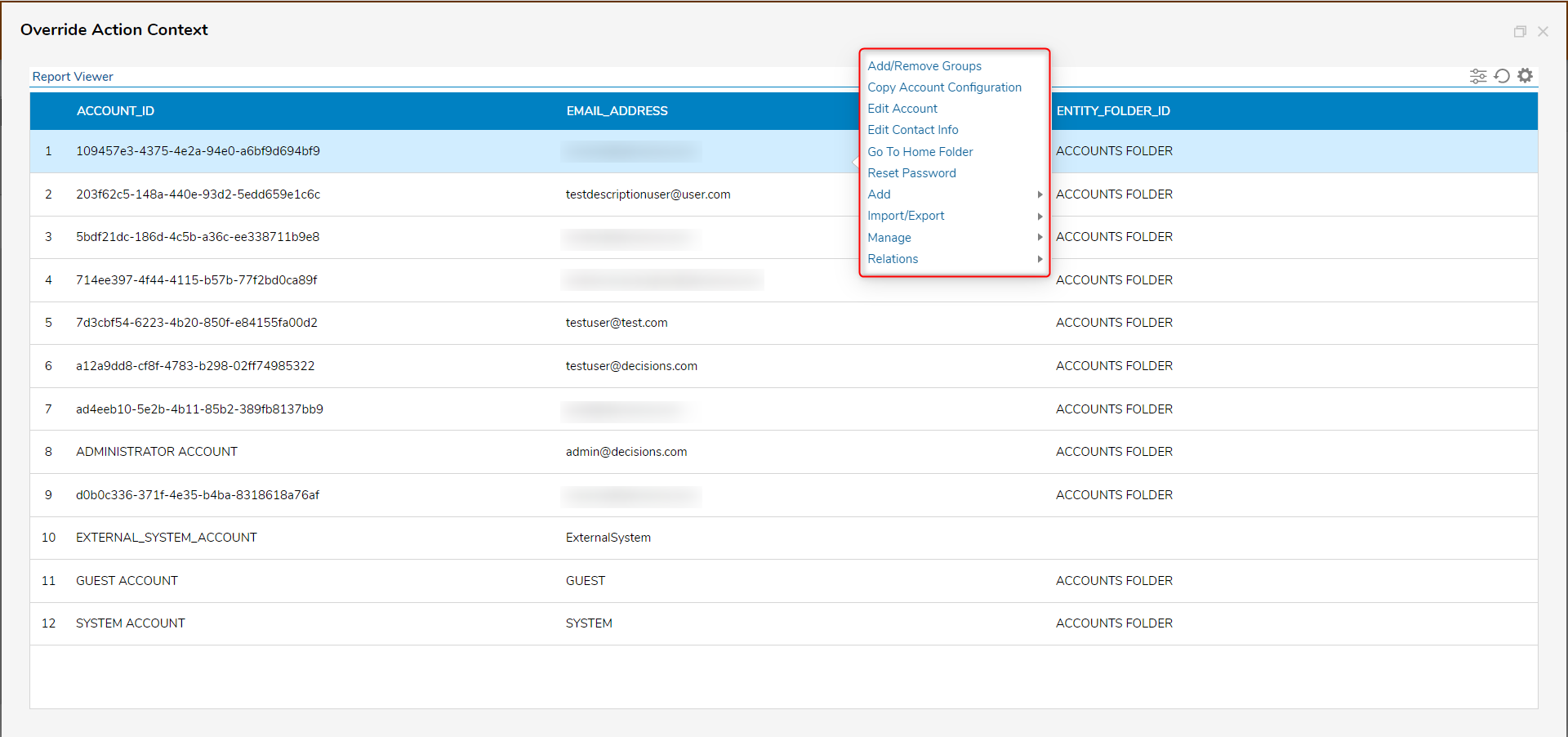Reports offer the ability to collect, view, filter, and organize data. Often, it may be helpful to edit collected data. However, users cannot use data-specific Actions on a report's collected data by default. However, enabling the Override Action Context Property allows users to add Actions for specifically sorted data.
Once configured, these Actions can be used by right-clicking a piece of data representing the user-defined Entity type on a Report.
Example
In this example, Integrate with a Database Table in Decisions. This table contains ID, First Name, Last Name, and Email Address fields. Begin by creating a Report on the External Table, allowing the ability to pull Account Information and Actions by selecting Report Data.
The ID field in the external table matches Account Id in Decisions.
Setup
- Start with Adding a Database Table. In the Portal, navigate to a Designer Folder and click CREATE DATATYPES/INTEGRATION. Then, choose Add Table from the Datatypes/Integration > Database Integration, and CREATE.
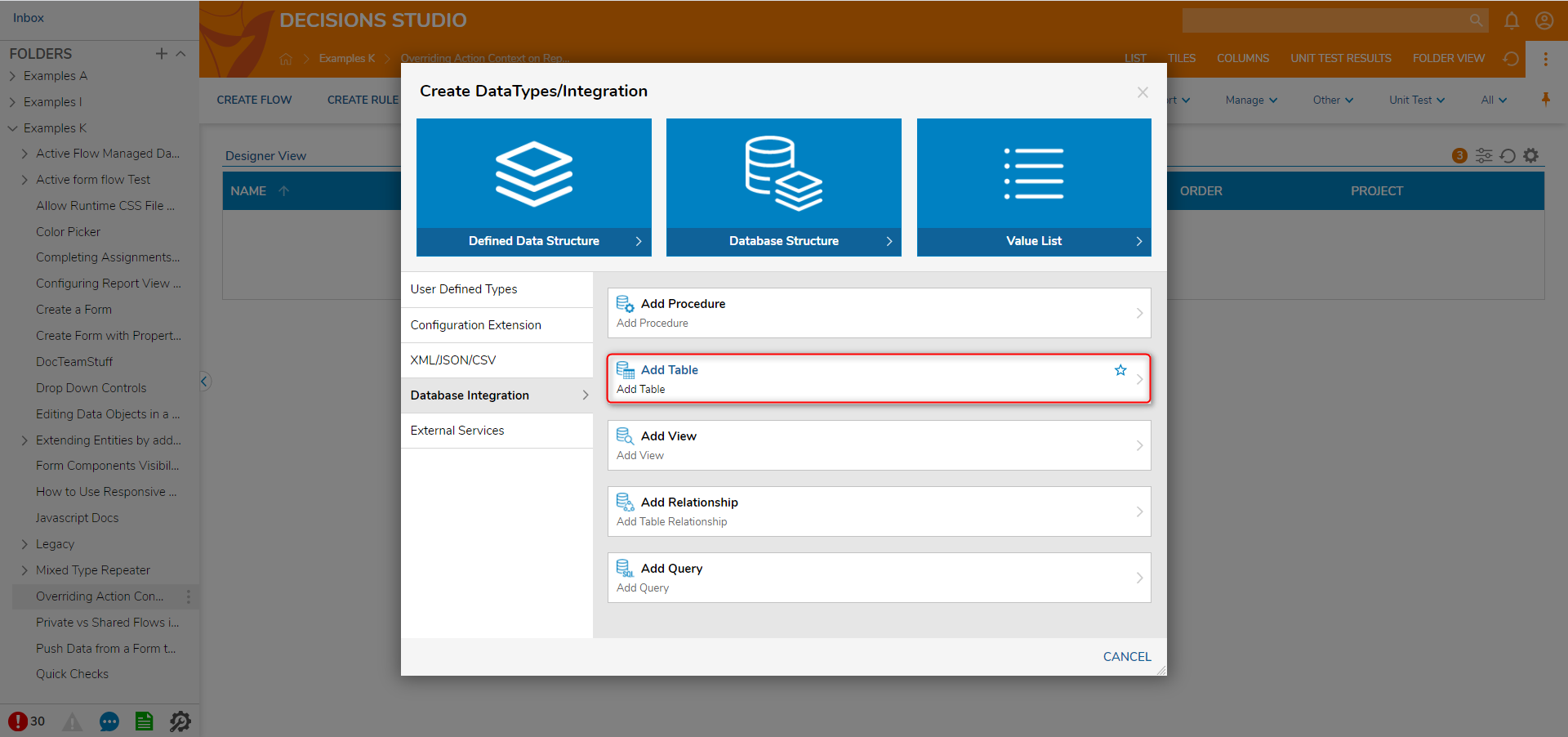
- Choose an existing local connection or create a new Database Integration. For this example, select LOCAL CONNECTION. Then, click NEXT.
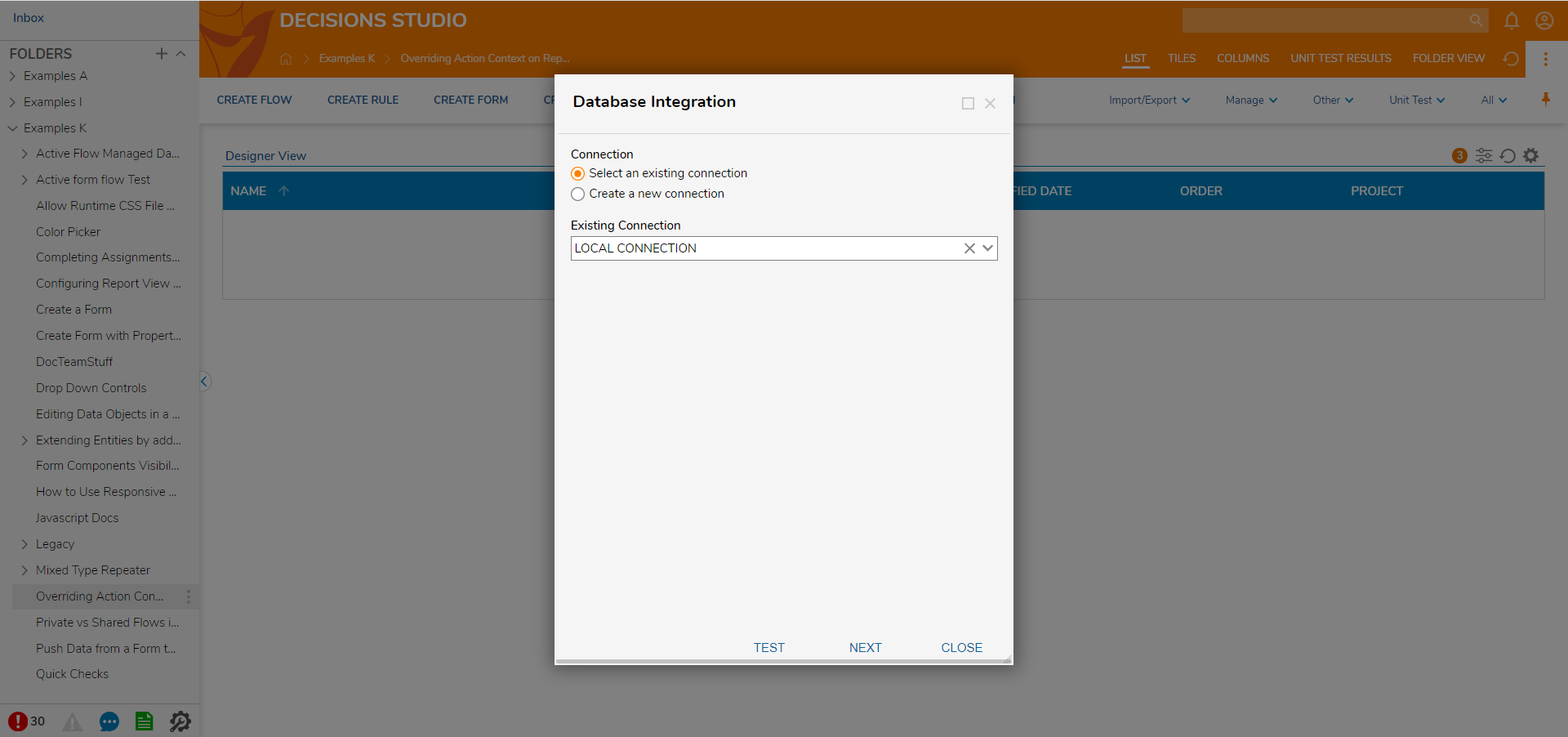
- Select an Internal Database, choose dbo.entity_account for this example, then select NEXT.
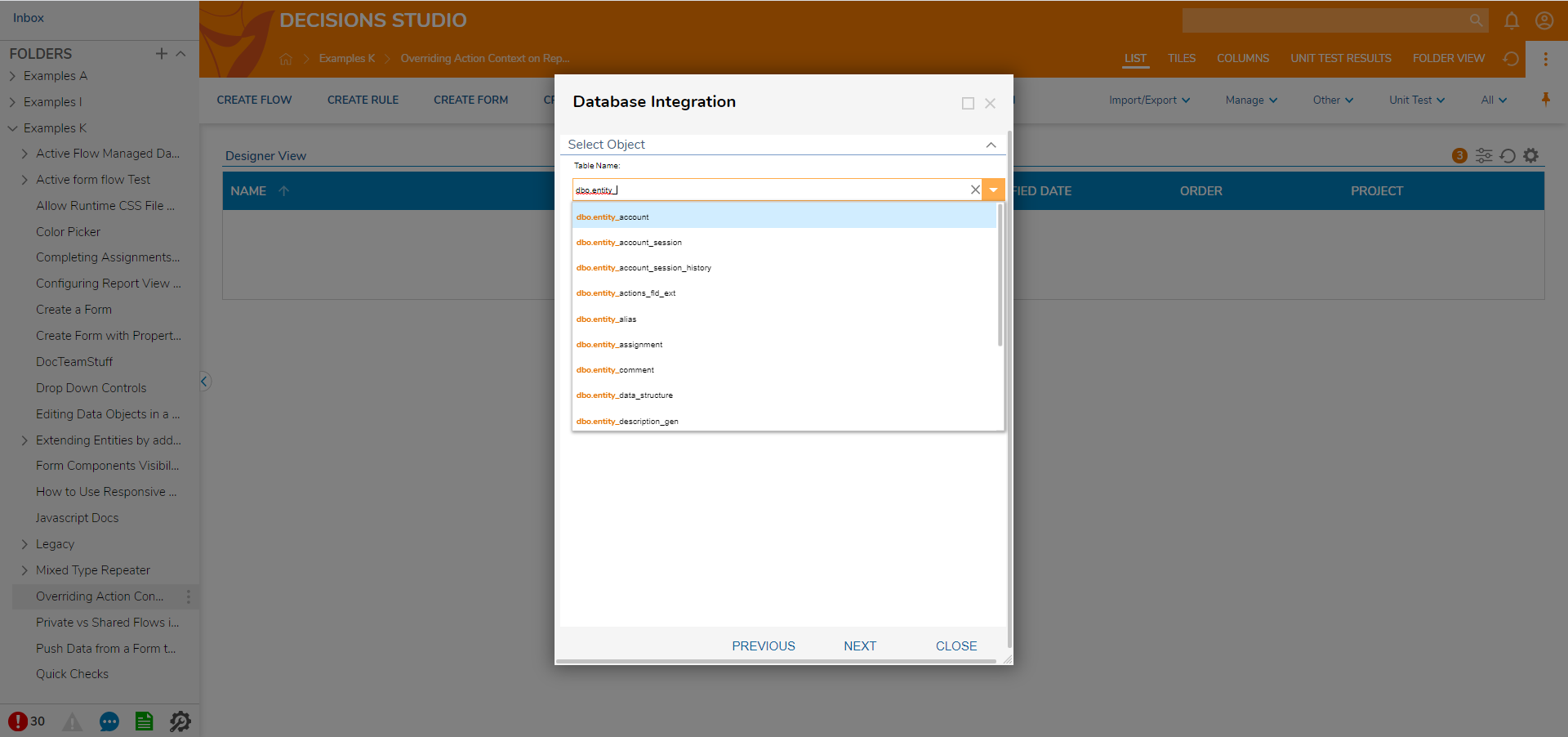
- Select a Table from the Table Name drop-down list. Then, choose from the Fields available. The Fields that are selected will generate for this Table integration. Select a Table Key, choose NEXT, and then SAVE to save the table integration.
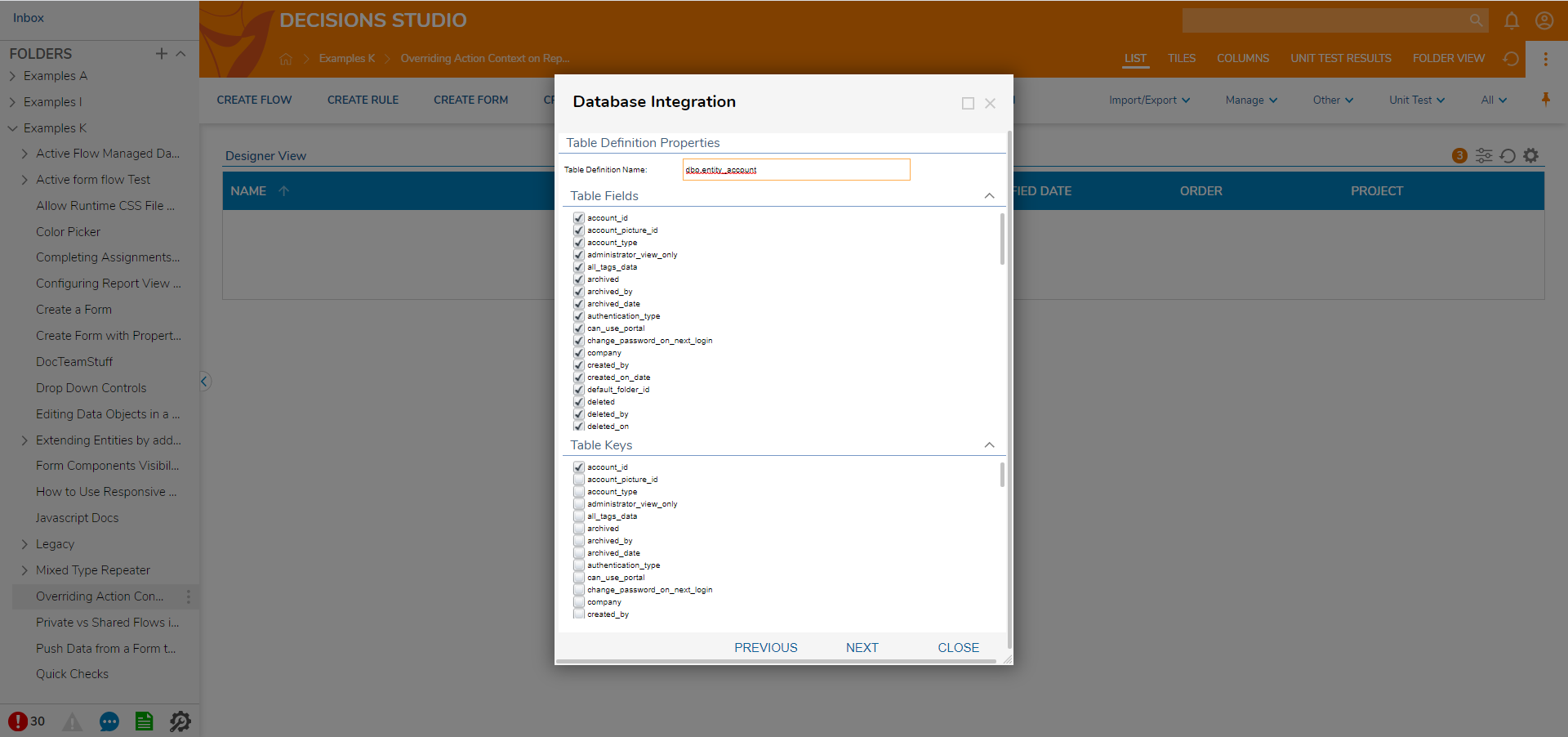
- Click CREATE REPORT from the Global Action Bar in the Designer Folder. Next, select the Default Report type, click CREATE, then Name the Report. Afterward, select CREATE once more to proceed to the Report Designer.
- In the Report Designer, add the Integrated Table as Data Source for the Report. Expand Data Sources > Common > LOCAL CONNECTION and add the dbo.entity_account table as the Data Source.
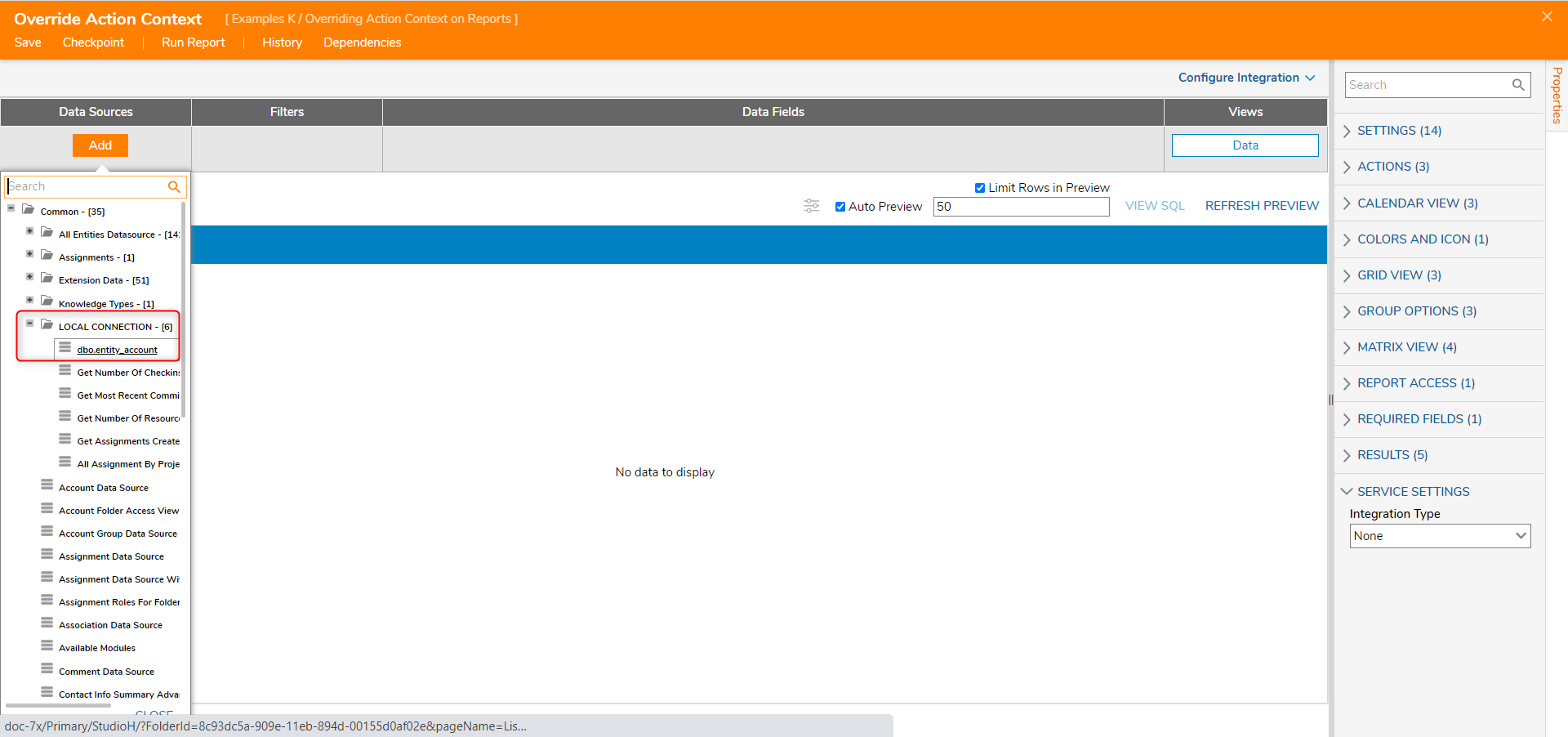
- Next, add desirable columns from the Data Source to populate Report with Data.
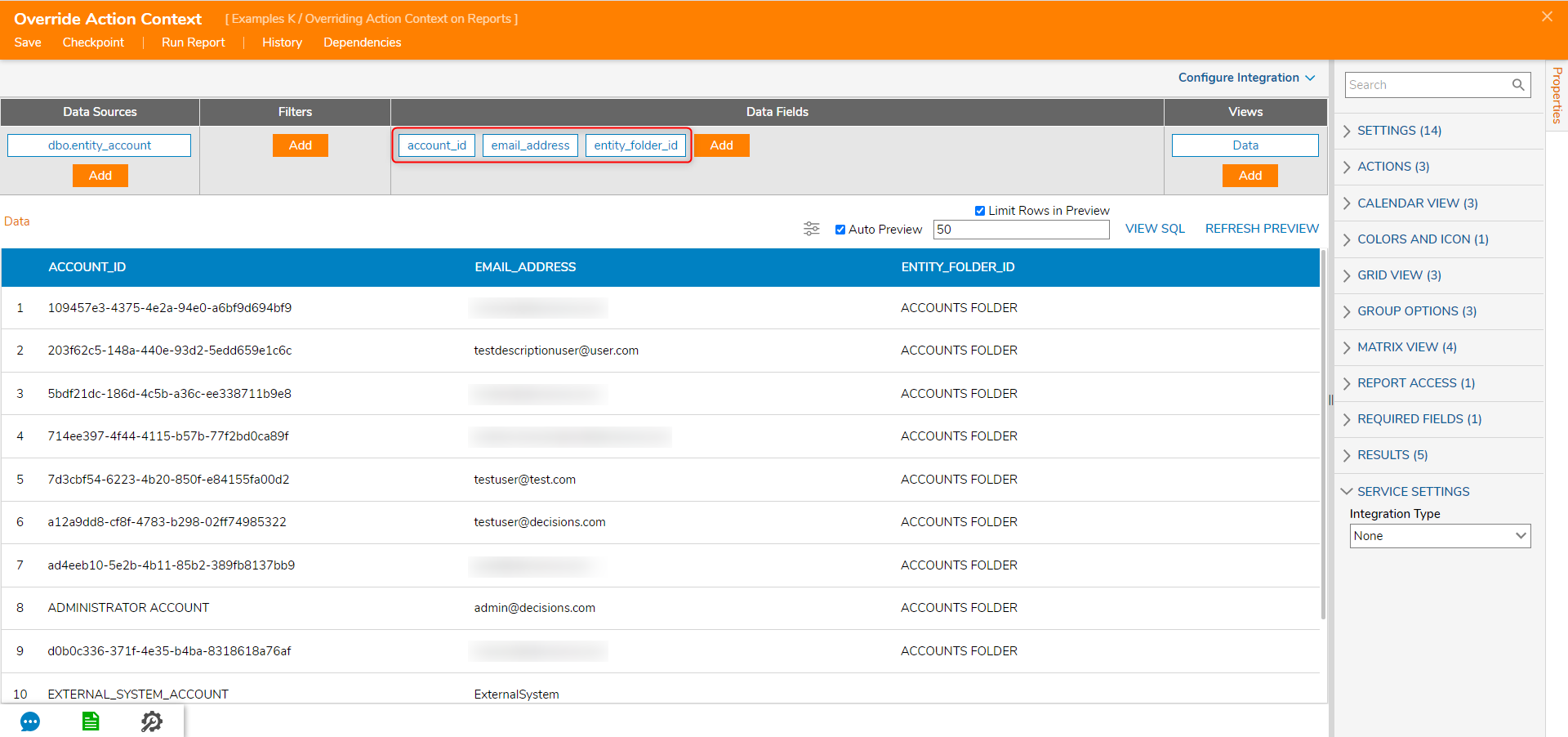
- Add desirable columns from the Data Source to populate Report with Data.
- If the Report is saved and run, there will be no Actions on the Data. To add Account actions to the Data, in the Properties panel under Actions, check Override Action Context.
- Search for 'account' in the Action Context Type drop-down and pick DecisionsFramework.ServiceLayer.Services.Accounts.Account.
- Next, pick account_id for the Actions Context ID Field drop-down. This completes the Report design.

- Select Run Report. Right-click any Row Data on the Report to view the available Account Actions.
